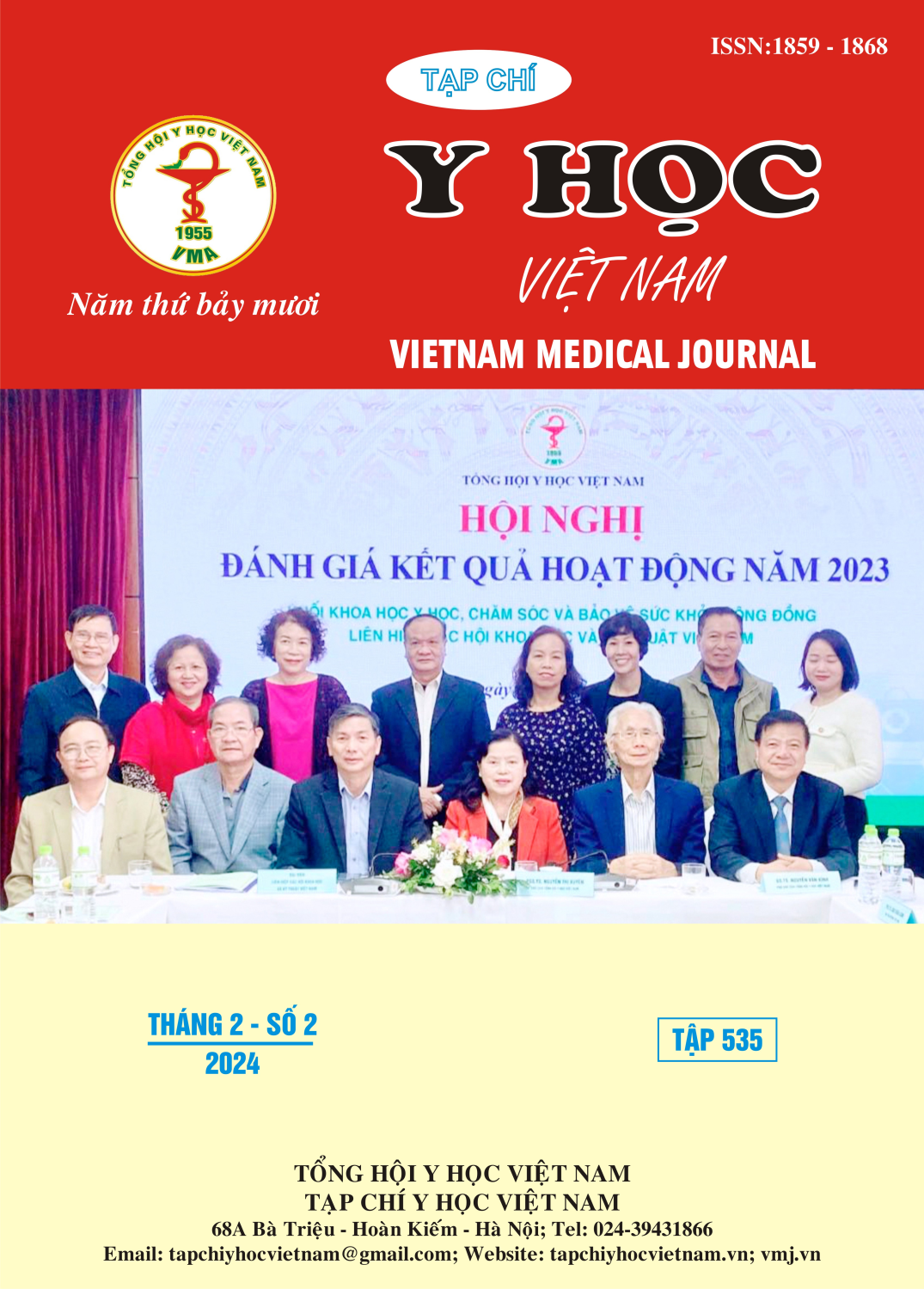RESTLESS LEGS SYNDROME AND SOME RELATED FACTORS IN HEMODIALYSIS PATIENTS
Main Article Content
Abstract
Restless Legs Syndrome (RLS) is a common sensory-motor neurological disorder, especially prevalent in end-stage kidney disease patients, with associations to sleep and mood disturbances. Objectives: The study aimed to determine the prevalence, severity, and factors related to RLS in hemodialysis patients. Materials and Methods: The study involved 257 patients undergoing periodic hemodialysis at a Kidney and Urology Center and Bach Mai Hospital, who were interviewed using the International Restless Legs Syndrome Study Group (IRLSSG) diagnostic criteria. They also completed the Pittsburgh Sleep Quality Index (PSQI) and Hospital Anxiety and Depression Scale (HADS) questionnaires. Results: Among the study participants, 51 cases (19.8%) were diagnosed with RLS, with the highest prevalence in the 51-60 age group (39.2%). The average severity score was 18.35 ± 7.84, with 13 patients having mild RLS, 21 moderate, 14 severe, and 3 very severe RLS. RLS severity was linearly associated with sleep quality impairment (r = 0.608; p = 0.000) but not with anxiety or depression. Age, gender, and BMI were not related to RLS. The average hemodialysis duration was significantly higher in the RLS group compared to the non-RLS group (p = 0.005). There were no statistically significant differences in various laboratory parameters, including hemoglobin, serum iron, transferrin saturation (TSAT), calcium, phosphorus, calcium-phosphorus product, and albumin between the RLS and non-RLS groups. Chronic comorbidities, anemia, and iron deficiency did not significantly differ between the two groups. Conclusion: Restless Legs Syndrome is highly prevalent in patients undergoing periodic hemodialysis. The severity of the condition is closely related to sleep disturbances, while the presence of anxiety and depression does not significantly affect its severity. Patients with RLS had longer average hemodialysis times. There were no statistically significant differences in anemia, iron deficiency, BMI, and laboratory parameters between RLS and non-RLS patients.
Article Details
Keywords
Restless Legs Syndrome, hemodialysis patients
References
2. Samavat S, Fatemizadeh S, Fasihi H, Farrokhy M. Restless Leg Syndrome, Insomnia, and Depression in Hemodialysis Patients: Three Sides of a Triangle? Nephro-Urol Mon. 2017;9(3). doi:10.5812/numonthly.45076
3. Yildiz D, Kahvecioğlu S, Buyukkoyuncu N, et al. Restless-legs syndrome and insomnia in hemodialysis patients. Ren Fail. 2016;38(2):194-197. doi:10.3109/0886022X.2015.1111118
4. Allen RP, Picchietti D, Hening WA, et al. Restless legs syndrome: diagnostic criteria, special considerations, and epidemiology. A report from the restless legs syndrome diagnosis and epidemiology workshop at the National Institutes of Health. Sleep Med. 2003;4(2):101-119. doi:10. 1016/s1389-9457(03)00010-8
5. Walters AS, LeBrocq C, Dhar A, et al. Validation of the International Restless Legs Syndrome Study Group rating scale for restless legs syndrome. Sleep Med. 2003;4(2):121-132. doi:10.1016/s1389-9457(02)00258-7
6. Buysse DJ, Reynolds CF, Monk TH, Berman SR, Kupfer DJ. The Pittsburgh Sleep Quality Index: a new instrument for psychiatric practice and research. Psychiatry Res. 1989;28(2):193-213. doi:10.1016/0165-1781(89)90047-4
7. Zigmond AS, Snaith RP. The hospital anxiety and depression scale. Acta Psychiatr Scand. 1983;67(6): 361-370. doi: 10.1111/j.1600-0447. 1983.tb09716.x
8. Lin XW, Zhang JF, Qiu MY, et al. Restless legs syndrome in end stage renal disease patients undergoing hemodialysis. BMC Neurology. 2019;19(1):47. doi:10.1186/s12883-019-1265-y
9. Tsai LH, See LC, Chien CC, Chen CM, Chang SH. Risk factors for restless legs syndrome in hemodialysis patients in Taiwan. Medicine (Baltimore). 2019;98(51):e18450. doi:10.1097/ MD.0000000000018450
10. Zadeh Saraji N, Hami M, Boostani R, Mojahedi MJ. Restless leg syndrome in chronic hemodialysis patients in Mashhad hemodialysis centers. J Renal Inj Prev. 2016;6(2):137-141. doi:10.15171/jrip.2017.27


